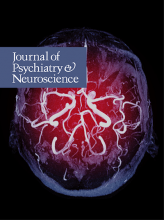A female patient in her late 20s had suffered from severe obsessive–compulsive disorder from childhood. Her obsessions were mainly about the contamination of her apartment on her return from public places. She carried out cleaning rituals that lasted for hours, including scrubbing her arms and face with abrasive powdered cleanser, which produced skin lesions. To avoid the distress of having to carry out these rituals, she often spent consecutive nights in public places. She had previously shown a partial response to clomipramine, but the dry mouth and constipation were intolerable. She was referred to our service on one 20-mg tablet of paroxetine daily, being reluctant to take more than one pill at a time. She was switched to 30-mg tablets without improvement. Risperidone was added, at an initial dose of 0.5 mg at bedtime, which led to some improvement over the next 2 weeks; the daily dose was then increased to 1 mg, which produced a robust improvement in the following 2 weeks that allowed her to return to her apartment daily with little distress and few rituals. She stopped using powdered cleanser, and her skin lesions disappeared. She put on weight and regained a normal body mass index. At the last followup visit 1 year later, the improvement was sustained.
As outlined in this case, atypical antipsychotics can be used for patients with treatment-resistant mood and anxiety disorders. In most such patients, however, this approach should be a second-line approach after use, or at least consideration, of other, more established strategies. There is no evidence to support the use of all agents of this class for both mood and anxiety disorders. Consequently, the choice of such an agent must be based primarily on the reported efficacy of the specific medication for the condition to be treated. Although all atypical antipsychotics thus far available appear to be effective in treatment-resistant unipolar and bipolar disorders, only risperidone and quetiapine have been consistently reported as effective in double-blind trials of patients with obsessive–compulsive disorder (Blier, J Psychiatry Neurosci 2005;30:232–3).
A second guideline for the use of these drugs could be based on their immediate clinical effects. For instance, olanzapine and quetiapine are considered the more sedative representatives of this class and could be preferentially selected if prompt sedation is desirable. A third guideline could be based on the side effects. Olanzapine is known to have the greatest potential for weight gain in this class, followed by risperidone and quetiapine, whereas ziprasidone and aripiprazole are generally weight neutral (Ananth et al, Ann Clin Psychiatry 2004;16:75–85). Prolactinemia is another side effect that could play a role in drug selection. Risperidone increases the prolactin level, aripiprazole decreases it (because of its partial agonistic activity at dopamine type 2 receptors), and the other drugs of this class do not markedly alter this parameter in a sustained fashion (Goodnick et al, Expert Opin Pharmacother 2002;3:1381–91).
Finally, when initiating an augmentation trial with these drugs, low doses should be used, as their beneficial effects may be apparent at doses that are subtherapeutic for the treatment of psychotic disorders. Quetiapine and aripiprazole may be subject to pharmacokinetic interactions with drugs that modify the activity of cytochrome P450 3A4 (e.g., carbamazepine and St. John’s wort as activators, erythromycin antibiotics and grapefruit juice as inhibitors). Olanzapine levels can be markedly increased by CYP1A2 inhibitors (e.g., fluvoxamine and fluoroquinolone antibiotics). Risperidone levels are increased by CYP2D6 inhibitors (e.g, fluoxetine, paroxetine and high doses of sertraline, citalopram and escitalopram), but those of its main active metabolite, 9-hydroxyrisperidone, may decrease. In general, the overall concentration of the risperidone moiety will therefore not be influenced to a problematic extent, especially when low doses are used (de Leon, Psychosomatics 2005;46:262–73; Spina et al, Ther Drug Monit 2001;23: 223–7).
Footnotes
To submit questions for this regular feature, please send them to the Journal of Psychiatry & Neuroscience, CMA Media Inc., 1867 Alta Vista Dr., Ottawa ON K1G 3Y6, Canada; fax 613 729-9545; jpn.office{at}sympatico.ca. Please include details of any relevant case and your name, address, telephone and fax numbers as well as your email address.
The information in this column is not intended as a definitive treatment strategy but as a suggested approach for clinicians treating patients with similar histories. Individual cases may vary and should be evaluated carefully before treatment is provided.
Competing interests: Dr. Blier has had paid consultancies with Janssen, Eli Lilly and Bristol-Myers Squibb. He developed two 3D animations for Janssen under contract and received a grant from Janssen for a laboratory study on risperidone. He has also received speaker fees from Pfizer and Janssen.









